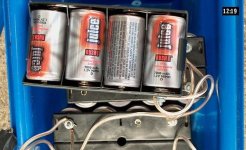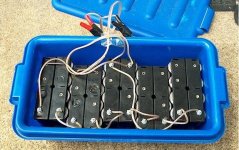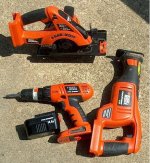DrkAngel
1 GW
Soon after I got my first EZip, I determined that the OEM 24v SLA batteries were woefully inadequate.
Even before I went to 36v SLA, I built and, briefly, used a home-built Nimh pack.
Somewhere I found a reasonable priced source for 7ah D cells.
After a bit of searching I also found a "lot" of 8 D cell holders.
Using 2 1/2 - 8packs I had my 1st 24v 7ah pack.
Probably, due to the limited wire capability, the pack seem inadequate.

So ... I decided to double the pack, in order to achieve double the amp output, as well as double the ah.

At the time, my ezip was limited to the oem 16mph, and that, combined with a mishap that detensioned all the springs on 1/2 the cells, prompted me to move on to my 36v SLA phase.
Yes! That is why I always recommend installing an inline fuse!
Even before I went to 36v SLA, I built and, briefly, used a home-built Nimh pack.
Somewhere I found a reasonable priced source for 7ah D cells.
After a bit of searching I also found a "lot" of 8 D cell holders.
Using 2 1/2 - 8packs I had my 1st 24v 7ah pack.
Probably, due to the limited wire capability, the pack seem inadequate.

So ... I decided to double the pack, in order to achieve double the amp output, as well as double the ah.

At the time, my ezip was limited to the oem 16mph, and that, combined with a mishap that detensioned all the springs on 1/2 the cells, prompted me to move on to my 36v SLA phase.
Yes! That is why I always recommend installing an inline fuse!







